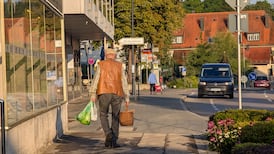The main route for trafficking cocaine into western Europe has moved north from the Iberian peninsula to the ports of Rotterdam, Antwerp and Hamburg – driven largely by a newly competitive Colombian market following the disbandment of Farc rebels in 2016.
That is the key finding for governments and police forces of a joint investigation by the UN drugs and crime office and the policing agency Europol, which says that cocaine is now the second most popular drug after cannabis in western and central Europe, with 4.4 million users last year.
What has changed is that in the absence of the Farc “command structure” that controlled the market, European gangs are buying their cocaine directly from Colombian suppliers who are “more violent, diverse and competitive” – and whose power poses “a clear threat to European and global security”.
Cocaine generates "multibillion-euro criminal profits", and as a result "nearly 40 per cent" of the gangs active across Europe are now involved in trafficking, said Julia Viedma, head of operations and analysis at Europol headquarters in The Hague.
The growing scale of the problem underlined the strategic importance of cross-border money laundering investigations in which governments co-operated to confiscate illegal assets, she said, as a 27-page Europol-UNODC Cocaine Insights Report was published on Wednesday.
Cultivation
The report says that at its height, Farc – originally a Marxist-Leninist guerrilla force championing agrarianism – controlled a large proportion of the land under cultivation of the drug in Colombia, and regulated access to the brokers and international dealers of its choice.
Farc's dwindling influence increased the potential for more direct "new alliances and partnerships", and as a result "the increased use of container shipments relying on the high-volume ports of Antwerp, Rotterdam and Hamburg has consolidated the role of the Netherlands as a staging point".
The bottom line, the investigation finds, is that "the epicentre of the cocaine market in Europe has shifted northwards" from Spain – with "Europe's North Sea coast overtaking the Iberian peninsula as the primary point of entry for cocaine reaching Europe".
While those ports have always been important to onward distribution of drugs to Europe’s capital cities, they are now more important than ever to the distribution of cocaine, still the drug of choice of the middle classes, according to the European Monitoring Centre for Drugs and Drug Addiction.
Containers
Last February, German and Belgium police discovered a total of more than 23 tonnes of cocaine from South America in shipping containers of wood blocks and construction putty arriving in Antwerp and Hamburg and destined, they said, for the Netherlands.
It was the largest cocaine haul ever seized in Europe and one of the largest worldwide, said the German authorities, who put its unprecedented street value at “multiple billions of dollars”.









